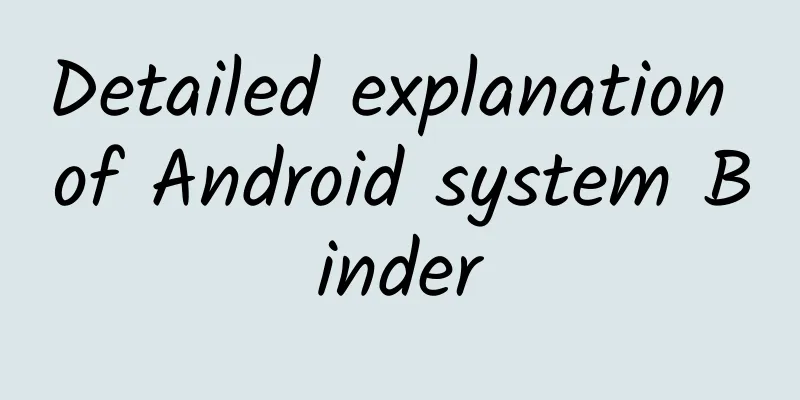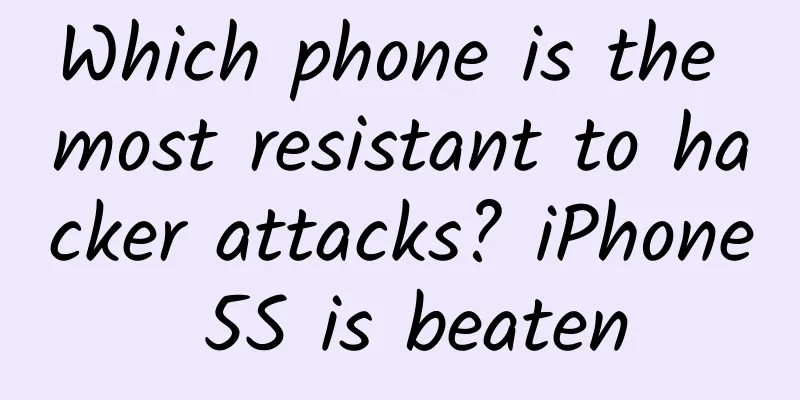Detailed explanation of Android system Binder

|
This article is reprinted from the WeChat public account "Embedded Linux System Development", written by asonangel. Please contact the WeChat public account "Embedded Linux System Development" to reprint this article. Recently the blogger is studying the binder of the Android system. What is binder? It can be understood as a method of inter-process communication in the Android system. Although the Android system is based on Linux, it does not use the inter-process communication method that comes with Linux, but uses a more efficient binder. Understanding binder is crucial to understanding the Android system. The binder principle diagram is as follows: Binder communication uses a client/server architecture, which is the same as Socket, but slightly more complicated. The binder component includes Client, Server, ServiceManager, and binder driver, among which ServiceManager is used to manage various services in the system. Specific communication process: Server first registers a service with ServiceManager, which is actually just a string. Then Client obtains the service from ServiceManager, and the keyword is the registered string. In this way, Client and Server can communicate. The real data flow goes through the binder driver in the underlying Linux kernel space, but this is encapsulated, so you don’t need to care about the real binder driver, just call functions between Client and Server to send and receive data. It is the onTransact function on the server and remote()->transact(TEST, data, &reply) on the client. The sent data is stored in data, and the returned data is stored in reply. Both Client and Server can send and receive data. Android system architecture diagram: After understanding binder, let's analyze it in detail: the binder driver must be in the bottom Linux kernel, so the binder client and server can exist anywhere. For example: 1. The binder server is in the app layer, and the client is in the app layer. 2. The binder server is in the native layer, and the client is in the app layer. 3. The binder server is in the app layer, and the client is in the native layer. 4. The binder server is in the native layer, and the client is in the native layer. All four situations are possible. This is a bit abstract, so I will post two articles to link. I have verified the codes of these two articles and they can be used. It should be noted that the binder of the APP layer is written in Java, and the binder of the native layer is written in C++. But in fact, the interfaces are very similar. But to understand the code, you need to understand several classes first: The real inheritance relationship of native layer binder is as follows: A little more symmetry may make it easier to understand: We mainly inherit from BnInterface and BpInterface to implement our own server and client. bp: binder proxy bn:binder native sm:ServiceManager |
<<: Goodbye WeChat! My WeChat chat history is not worth 180 yuan
>>: Five UI styles for the second half of 2021, there must be one you like!
Recommend
"Sleeping on a hard bed is good for your waist"? You will understand after reading this
“Sleeping on a hard bed is good for your waist” M...
React mobile enterprise data project practice
Course Description This project starts with getti...
MediaTek financial report: Dimensity flagship chip revenue increased 100% year-on-year to US$2 billion in Q4 2024
According to recent news, chip giant MediaTek rec...
Diving into the deep sea 4000 meters, this unprecedented world is so exciting...
Today is the 15th World Oceans Day. This year'...
Taking advantage of the momentum of "Ode to Joy 2", why is JD.com the only one to dominate the screen?
I know that half of my advertising dollars are wa...
What is the ending of In the Name of Family? Analysis of the characters in the finale of In the Name of Family
In the ending of "In the Name of Family"...
Baidu search oCPC account establishment practice
This article is a practical tutorial for setting ...
Based on 800 million massive data, here are 5 tips to increase the click-through rate of news messages
The China Internet Network Information Center (CN...
Is there anything that computers can't do? Generate true random numbers. Computers don't roll dice.
In today's world, computers are indispensable...
Survey shows Android users watch more porn than iOS users
Friends who have watched adult pornographic video...
iOS 16 official version is coming: six new features are amazing
According to foreign media Macrumors, Apple is sc...
Share 4 websites that make you rich quietly, and see different Taobao customers
Let me share with you 4 websites that can help you...
Will eating carrots often make you black? Answer: You don’t eat enough to turn black!
Produced by: Science Popularization China Author:...
5 details tips to optimize your APP description!
Many people in the industry think that APP descri...
【2021】Zhou Sicheng Team Season 4
: : : : : : : : : : : : : : : .mp4 524.56M | | ├──...









